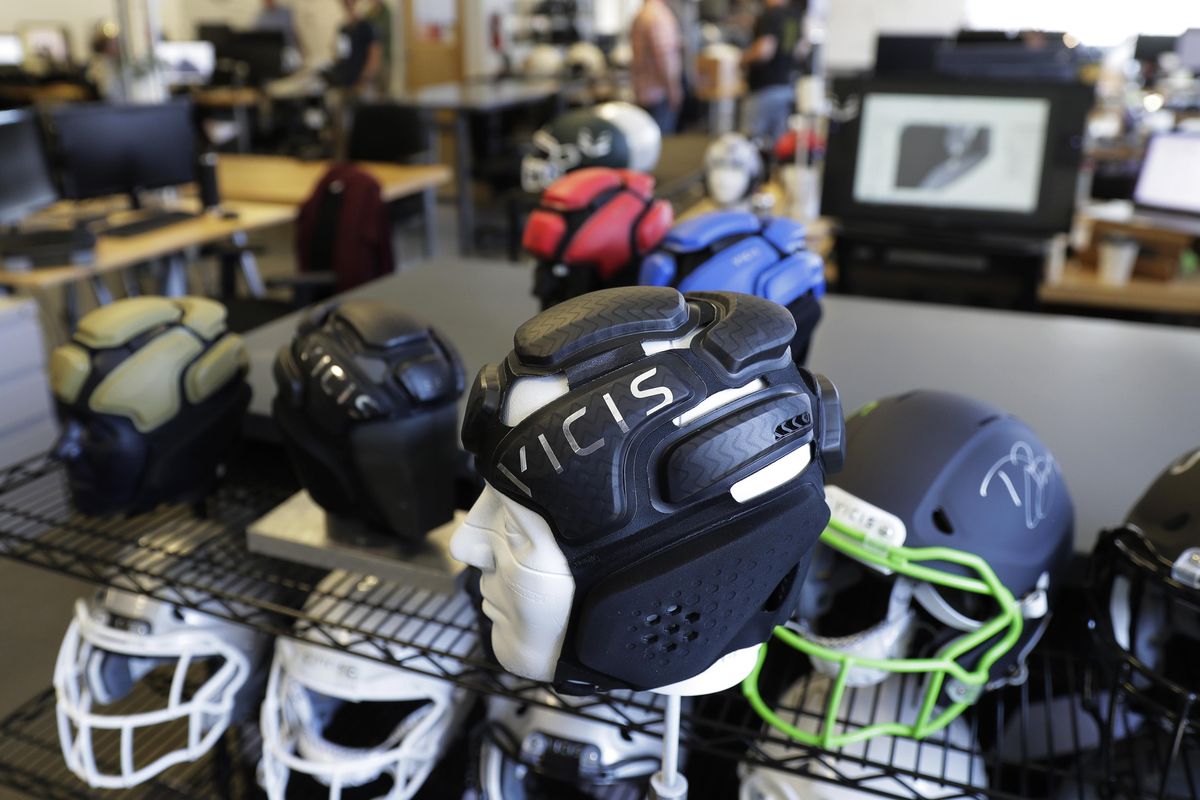Steve Christilaw: Price of head protection thorny issue for football

If you want to know what someone values, take a look at what they prioritize.
It’s taken years for football players to grow beyond the old “dumb jock” stereotype – one that was, for a long time, underlined by the simple fact that the powers behind the game invented pads long before they pushed to create the helmet.
Not long after the college rules committee voted in 1888 to allow tackling below the waist, padding became an integral part of a player’s equipment. Hip pads. A pad to protect the tailbone. Shoulder pads. Knee pads.
The helmet didn’t become a mandatory part of the gear package until 1939 for college football and 1943 for professionals.
Before that? Players were known to grow their hair long, thinking it would add a little padding.
That should tell you something about what the decision-makers in the annals of the game thought about what was between a player’s ears. One can easily make an argument that the advent of the helmet was pushed forward by the opportunity to paint them with logos.
Protecting what’s inside the helmet?
To paraphrase baseball philosopher Crash Davis, “Don’t think, it can only hurt the ballclub.”
To be sure, the powers that be created the helmet to help prevent skull fracture, not what’s inside the skull. You know, ‘No brain, no pain.”
You can see what was originally, OK generously, called a “football helmet” in pictures of the famed Four Horsemen of Notre Dame, Slingin’ Sammy Baugh and the Galloping Ghost, Red Grange. These leather hats fit in such a way that they always remind me of the old Coneheads routines on the early years of “Saturday Night Live.”
Those early “helmets” were fashioned by harness makers and blacksmiths, and one of the drawbacks to the leather hats was their tendency to rot when wet.
John T. Riddell and his son, John T. Riddell Jr., invented the first molded plastic helmet in 1940. The single face bar came along 15 years later.
Helmets have evolved and improved over the years. Energy improving material was first patented in 1971 and the Green Bay Packers even came up with an antifreeze solvent to put in their helmets to battle the frigid temperatures at Lambeau Field.
It’s only been the last few years that a priority has been placed on ways to protect a player’s brain from the damages brought on by concussion – protection for players of all ages and ability level.
All helmet manufacturers have been racing to find a formula that will work to make the game safer.
VICIS, a Seattle-based developer of helmets for both the NFL and the military, is developing a new helmet specifically designed for football-playing children.
On the south end of Lake Union, the 3-year-old start-up company has developed a state-of-the-art “Smash Lab” where it’s testing its new design by hitting it from all angles.
The company is working on a technology that will bend on impact, much the way a car bumper does.
They’ve had remarkable success.
According to a report in the Seattle Times, the VICIS Zero1 helmet has beaten its competition in impact tests run by the NFL for each of the past three years and a study of high school athletes by Harborview Medical Center found a significant reduction in concussions with the new design.
The challenge, however, comes with a price tag.
The professional model of the Zero1 helmet costs $950 – more expensive than its competition but a bite most major colleges and every NFL team can absorb. There are few high school programs that can afford that kind of equipment investment, but those that can have a booster club fundraising to make it work. No high school athletic budget can stretch that far – most can’t stretch at all.
The moral dilemma then becomes, to do everything possible to protect young players, can they afford NOT to upgrade to a safer helmet?
Schools aren’t the only ones facing that question.
The new youth model helmet from VICIS runs $495. A check of Amazon.com shows Pee Wee Football helmets priced from $33 to $150.
How quickly does a kid outgrow a helmet?
Safety is everyone’s primary concern. That is a definite given.
At the same time, nobody wants to be in a situation where a football-playing child’s safety become a factor of how much a family can afford to spend on a helmet.